Anatomique Olympique
Every two years, the world embraces Olympic-mania, and the fashion scene is no exception - just look at the cover of Vogue's August issue! Athletes are used as models in magazine editorials, and high fashion brands frequently step in to design the opening and closing ceremony looks for their respective countries: Lacoste for France, Stella McCartney for the United Kingdom, Giorgio Armani for Italy, and Ralph Lauren for the United States, among others. The athleisure trend shows no signs of slowing down on the runway and in stores, in part encouraged by the Games in Rio.
In 1984, the Olympics were hosted in the FIDM Museum's own Los Angeles; coincidentally, it was the same year the Games opened to corporate sponsorship, meaning athletes competed in uniforms with official sportswear logos, such as Nike, Adidas, and Reebok.[1] The integration of sports and fashion continued at the couture level when French designer Thierry Mugler dedicated his Printemps/Été 1984 collection to the Olympics, complete with an Opening Ceremony themed runway.
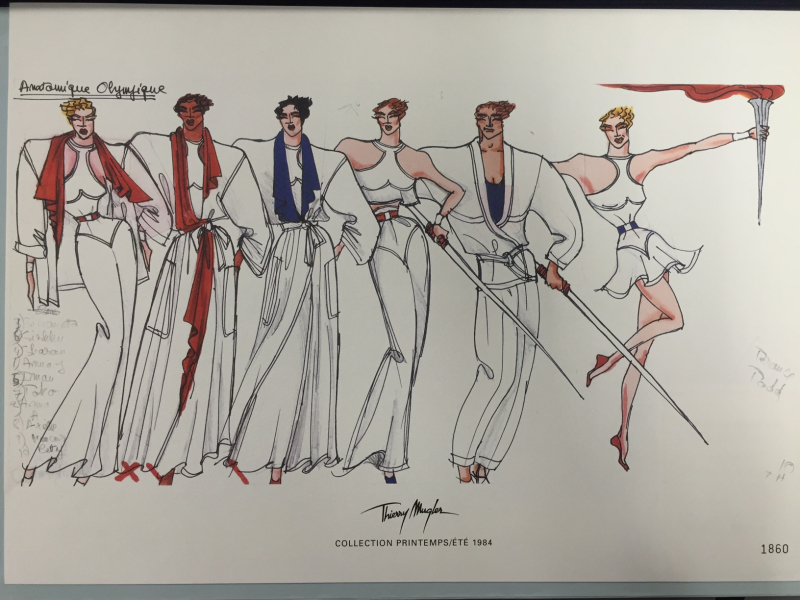 Thierry Mugler Portfolio
Thierry Mugler Portfolio
Lithograph sketch, Spring/Summer 1984
Gift of Shirley Wilson
SC2001.774.9
The FIDM Museum Special Collections contains a limited edition portfolio of reproduced Mugler sketches, including his 1984 Olympics collection. The sketch above is titled "Anatomique Olympique," which translates to Anatomical Olympic, or the Olympic body - fitting for a designer transfixed on the powerful representation of a woman's figure. Mugler illustrated women with broad shoulders, wasp waists, and long legs – 20th century Amazonian goddesses. Indeed, Mugler was known for creating severely structured yet highly sexualized garments for strong women. He utilized his exquisite tailoring techniques to create bold, almost fetish-like silhouettes that became “the defining image of the 1980s.”[2]
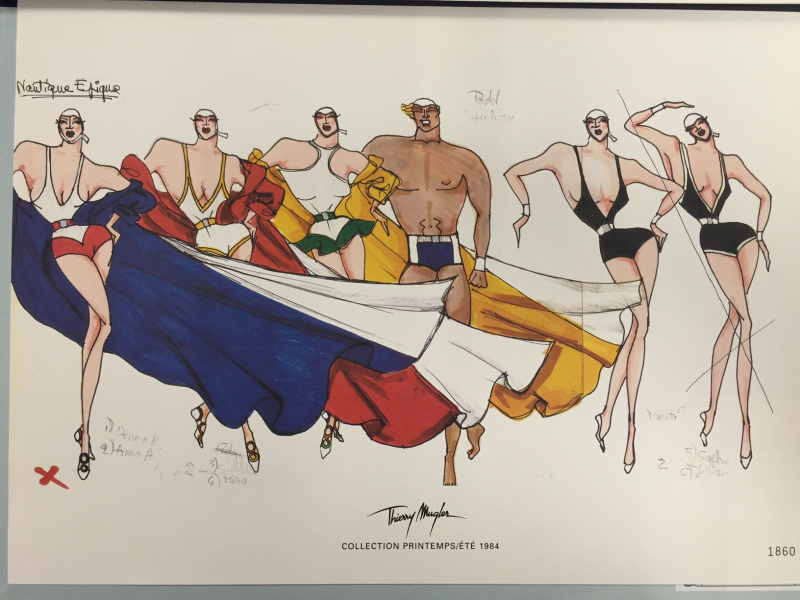 Thierry Mugler Portfolio
Thierry Mugler Portfolio
Lithograph sketch, Spring/Summer 1984
Gift of Shirley Wilson
SC2001.774.8
Mugler began his career as a dancer, giving him an understanding and appreciation for athleticism that is clear in his striking sketches, such as the "Natique Epique" swimmers from his Olympics collection shown above. His runway shows were always spectacular and theatrical, and his Olympics-inspired production was no exception. Model Iman wearing white sportswear and carrying a javelin perfectly showcases the exercise trend that emphasized toned and tanned bodies in the 1980s; for example, Team USA entered the stadium for the 1984 Opening Ceremonies wearing two-piece casual tracksuits, unlike the more formal ensembles of past Olympics.
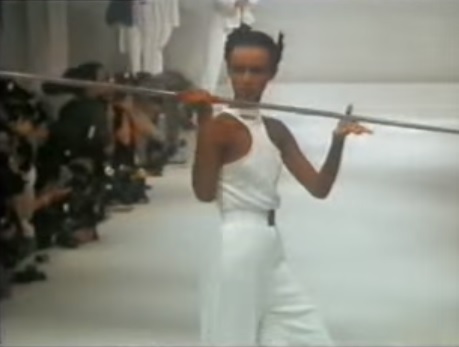
Screenshot of Spring/Summer 1984 Runway; full video on YouTube.
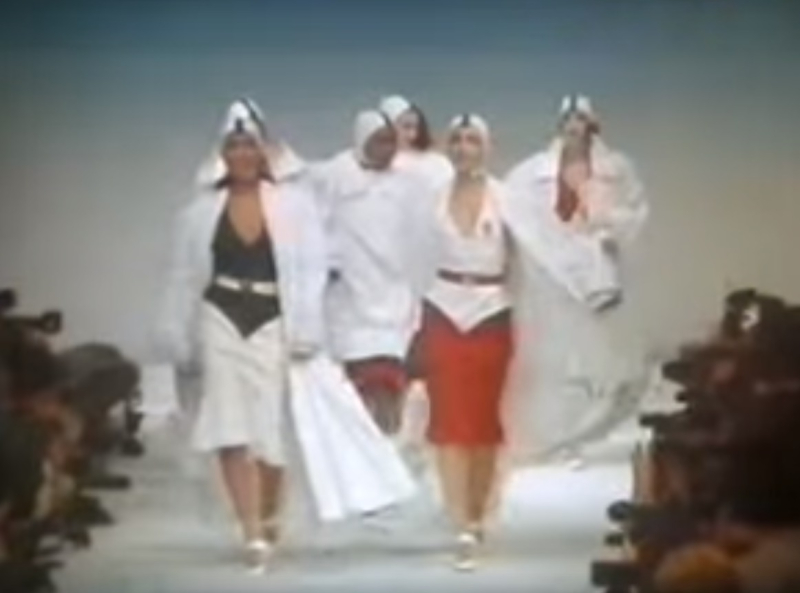 Screenshot of Spring/Summer 1984 Runway; full video on YouTube.
Screenshot of Spring/Summer 1984 Runway; full video on YouTube.
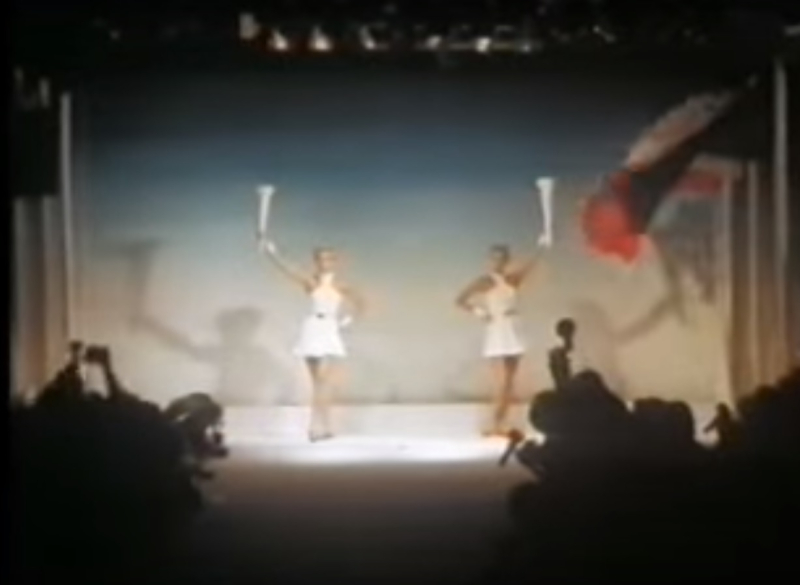 Screenshot of Spring/Summer 1984 Runway; full video on YouTube.
Screenshot of Spring/Summer 1984 Runway; full video on YouTube.
We hope you’ve enjoyed the FIDM Museum’s look at sports and fashion throughout the Olympic Games. Don’t forget, there will be more to come as we share details of our upcoming 2019 sportswear exhibition Outdoor Girls: Sporting Fashion, 1800 to 1950s…stay tuned!
[1] "Olympic Sportswear: A Complete History," V is for Vintage, August 3, 2012: http://visforvintage.net/2012/08/03/olympics-sportswear-a-complete-history/.
[2] Danièle Bott, Thierry Mugler: Galaxy Glamour (London: Thames & Hudson, 2010): 5.